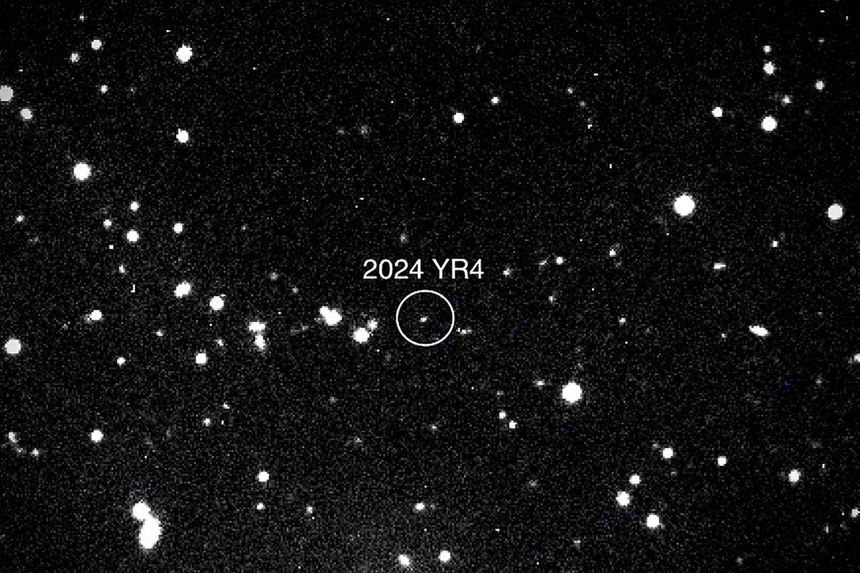If MRT disruptions and the bipolar weather in Singapore weren’t enough to make you sigh in the morning, here’s something else you should know — NASA has released data sharing that an asteroid could possibly hit Earth.
It has a 3.1% chance of hitting Earth in 2032.
Here’s what you need to know about it.
The “City Killer” Asteroid With a 3.1% Chance of Striking Earth in 2032
On Tuesday (18 February), NASA released data sharing that an asteroid known as 2024 YR4 now has a 3.1% chance of striking Earth on 22 December 2032.
The asteroid has the potential to level a ciy, which is why many have since coined the asteroid the “city killer” asteroid.

The asteroid was first detected late last year, on 27 December 2024, by the El Sauce Observatory in Chile. One month later, on 29 January, the International Asteroid Warning Network (IAWN) issued a warning memo after the probability of the asteroid striking Earth ticked up to 1%.
Since then, the probability has fluctuated but continues to increase gradually. It now stands at 3.1%.
While the figure of 3.1% may seem small, this “city killer” asteroid is the space rock with the highest threat level ever recorded in modern history. The last time an asteroid greater than 30-metres in size posed such a huge risk was back in 2004.

In 2004, the asteroid Apophis was briefly calculated to have a 2.7% chance of striking Earth in 2029. However, further observations eventually ruled out this possibility.
Hopefully, the possibilities of our new “city killer” asteroid striking Earth will be ruled out soon too lah.
The “city killer” asteroid is estimated to be betwen 40 and 90 metres wide. For comparison, the asteroid wiping out the dinosaurs millions of years ago was 10-kilometres wide.
Can’t estimate how much 90 metres and 10 kilometres look like? 90 metres is just slightly shorter than the length of a football pitch. 10 kilometres is approximately the distance from Jurong East to Buona Vista by car.
So, it’s quite a huge difference lah.
If the asteroid does hit Earth, the devastation it would cause would come less from its size but more from its velocity. It could strike Earth at nearly 64,000 km/h at sites like the eastern Pacific Ocean, northern South America, the Atlantic Ocean, Africa, the Arabian Sea, and South Asia.
It is also likely that the asteroid would explode midair with the power of about 500 times more than the power of the Hiroshima bomb.
This “city killer” asteroid also doesn’t appear to be a rare metal-rich asteroid, but an asteroid of fairly typical composition. In other words, it’s not exactly the “wagyu beef” of asteroids, but more like the normal beef slices you get at a $20/pax buffet.
No Cause for Alarm
Tired of waking up at 7 am and squeezing into the 8 am train to go to work? Well, perhaps you can cite the “city killer” asteroid as the reason why you have to stay at home today.
We’re just kidding — the asteroid doesn’t provide much cause for alarm according to experts.
Dr Bruce Betts, chief scientist of non-profit organisation The Planetary Society, shared that as astronomers gather more data on the “city killer” asteroid, the probability of the asteroid hitting Earth will likely tick up before rapidly falling to zero.
And in any event, experts will be watching the asteroid using the Webb telescope, the most powerful space observatory globally. There is also ample time to prepare for the asteroid’s impact — specifically, spacecraft could be sent to deflect the asteroid.
So, too bad. We guess you’ll still have to wake up and head for your 9-5 tomorrow.




